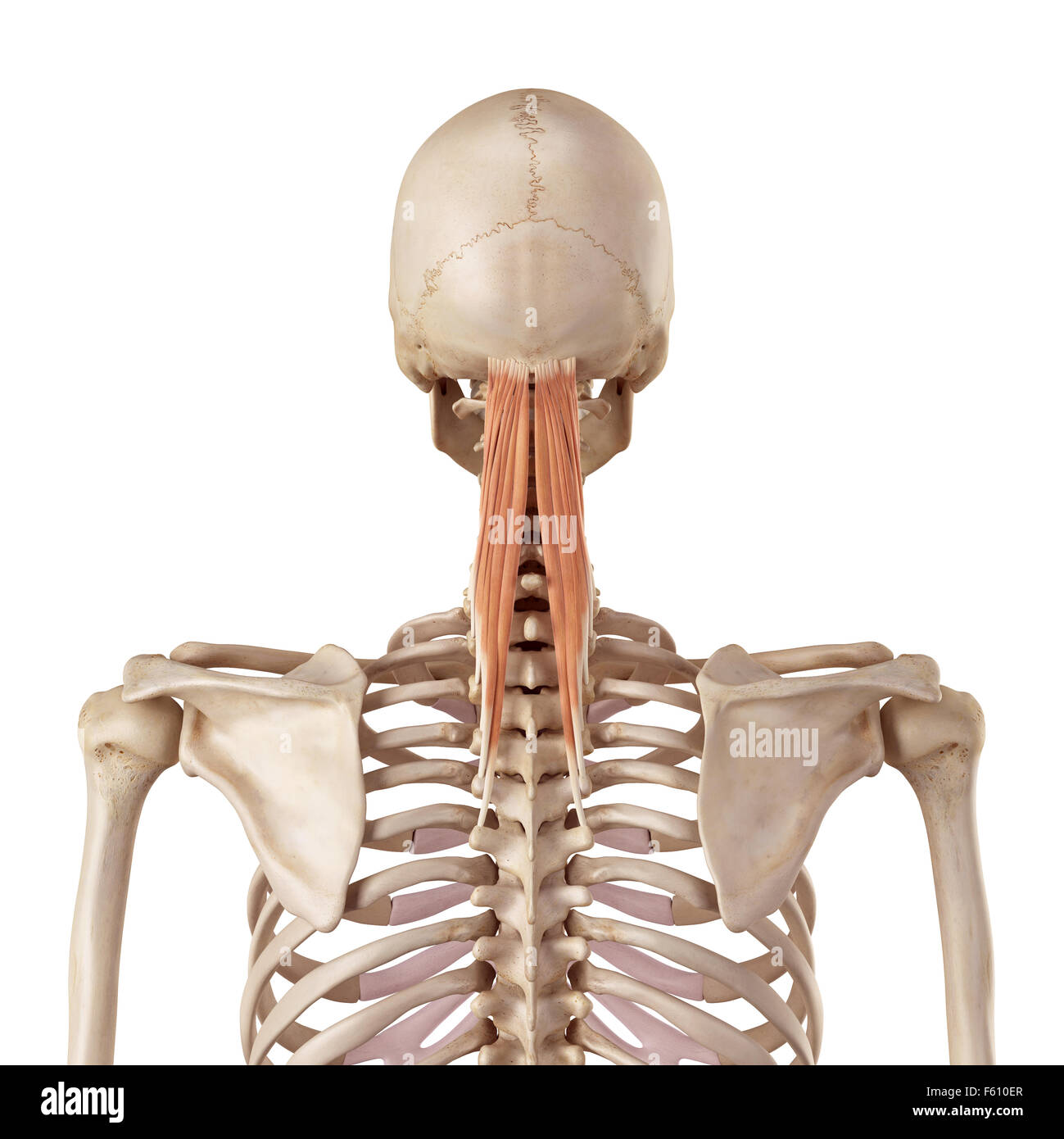
medical accurate illustration of the semispinalis capitis Stock Photo
The Semispinalis Muscle belongs to the group of muscles that are present on either side of the cervical spine. This muscle is quite big and is present on the posterior part of the neck. The function of this muscle is to facilitate movements of the head and the cervical vertebral column.

Semispinalis Capitis Muscles in Isolation Rear View of Upper Back Human
Description Semispinalis Capitus belongs to the semispinalis muscle group, which in turn is part of the Transversospinal group of muscles (formed of muscles between a spinous process and the transverse process of the vertebrae below) . The semispinalis muscles have the longest fascicles of transversospinalis group, spanning six segments.
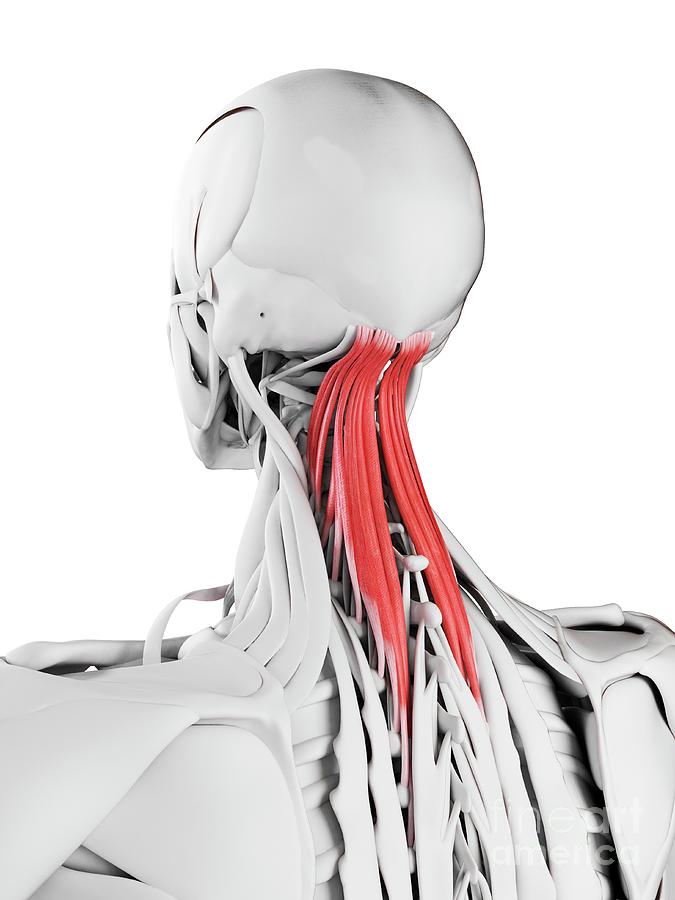
Semispinalis Capitis Muscle Photograph by Sebastian Kaulitzki/science
Attachments of the Semispinalis Capitis Muscle. Origin. a. Transverse processes of C7-T6 and articular process of C4-C6. Insertion. a. B etween superior and inferior nuchal lines of occipital bone. Use this time-saving muscle anatomy reference chart for the trunk wall to learn the semispinalis capitis muscle faster. 1.
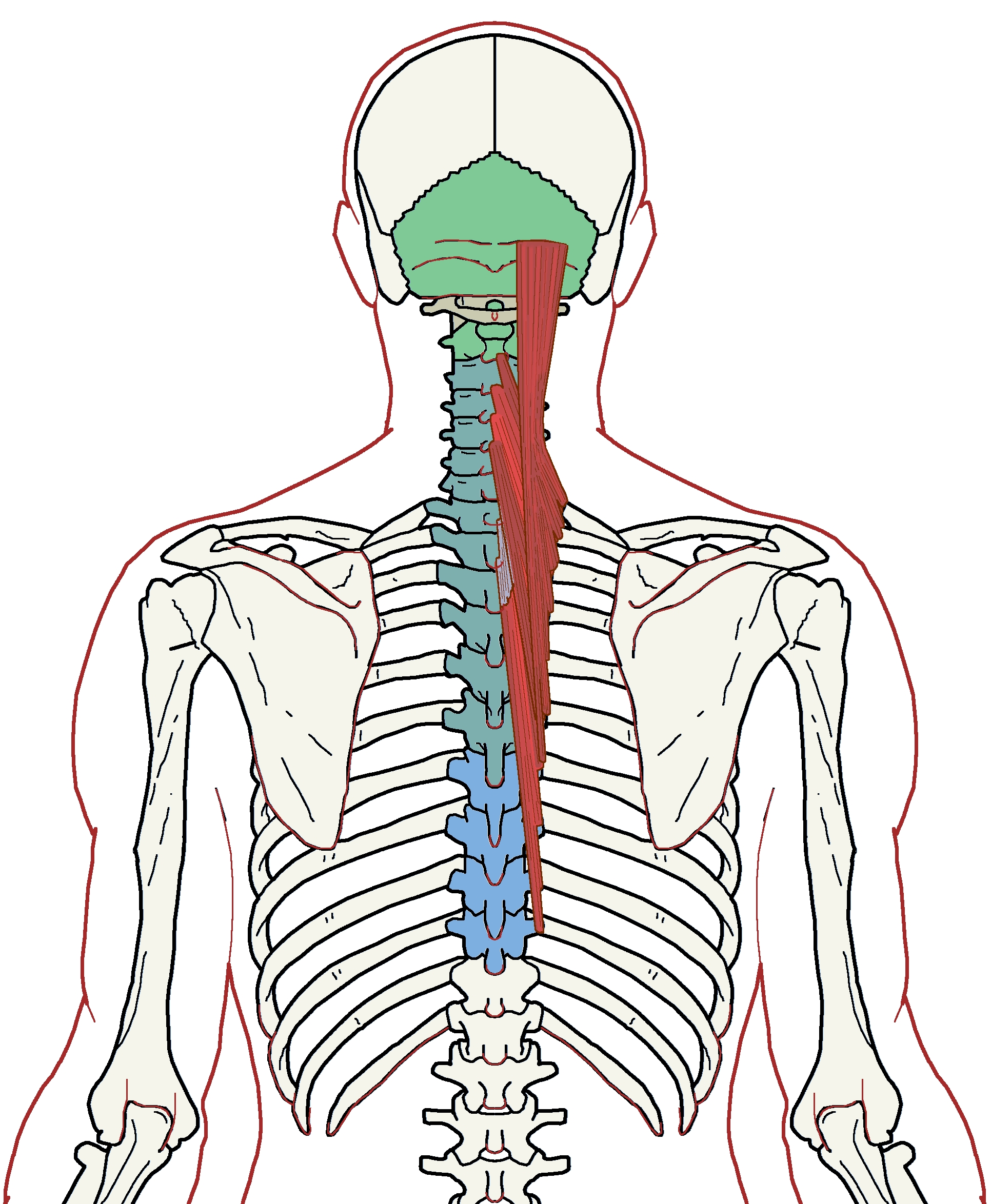
Semispinalis Capitis Functional Anatomy Integrative Works
Musculus semispinalis capitis 1/4 Synonyms: none Semispinalis capitis spans the neck and upper back regions as it runs from the cervical and thoracic vertebrae to the occipital bone. Its muscle tendons arise from the articular processes of vertebrae C4-C7 and transverse processes of vertebrae T1-T6.
:background_color(FFFFFF):format(jpeg)/images/library/12990/Ki1fT9WNTWDU6pd4O03A_Musculus_semispinalis_capitis_1.png)
Semispinalis capitis Anatomy, innervation, action Kenhub
The semispinalis capitis is the largest muscle in the posterior neck. The semispinalis cervicis and capitis lie deep to the upper trapezius. Muscle pain that emanates from this region is often misdiagnosed as a trapezius injury, when it is a semispinalis problem.
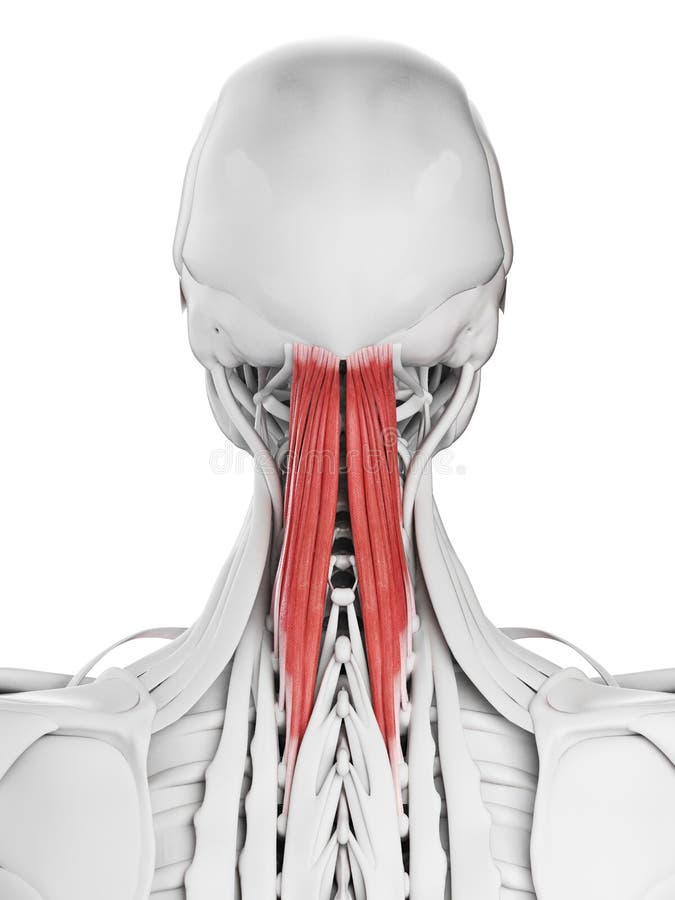
Das semispinalis capitis stock abbildung. Illustration von muskulatur
The Semispinalis capitis is found at the upper back portion of the neck, medial to the longissimus, capitis and cervicis and deep to the splenius. This muscle is part of the transversospinales muscle group.
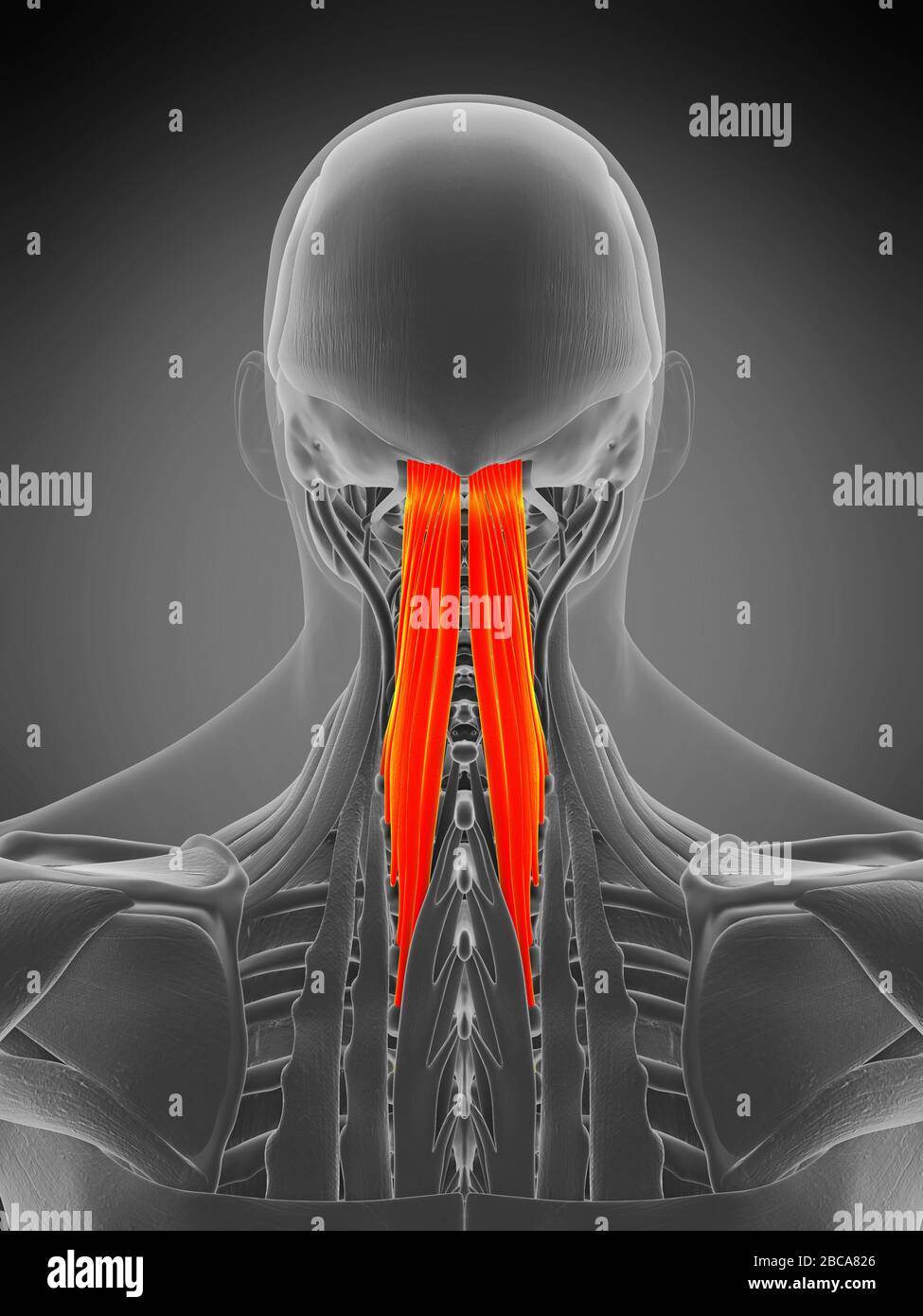
Semispinalis capitis hires stock photography and images Alamy
The semispinalis capitis is a long, thin muscle located on both sides of the back of the neck, and is the largest component of the three-part semispinalis muscle. This muscle extends from the base.

Semispinalis Capitis Muscle Photograph by Sebastian Kaulitzki/science
The semispinalis muscles are a group of three muscles belonging to the transversospinales. These are the semispinalis capitis, the semispinalis cervicis and the semispinalis thoracis. The semispinalis capitis ( complexus) is situated at the upper and back part of the neck, deep to the splenius, and medial to the longissimus cervicis and.

Semispinalis Capitis Muscle Neck and Head Pain The Wellness Digest
Right click on the image for a downloadable file of this muscle. Use of this artwork requires proper credit to be given (Permission: Dr. Joe Muscolino. www.learnmuscles.com) Semispinalis Capitis (of the Transversospinalis Paraspinal Group) - myofascial trigger points and their referral zones. Lateral and posterior views of myofascial trigger.
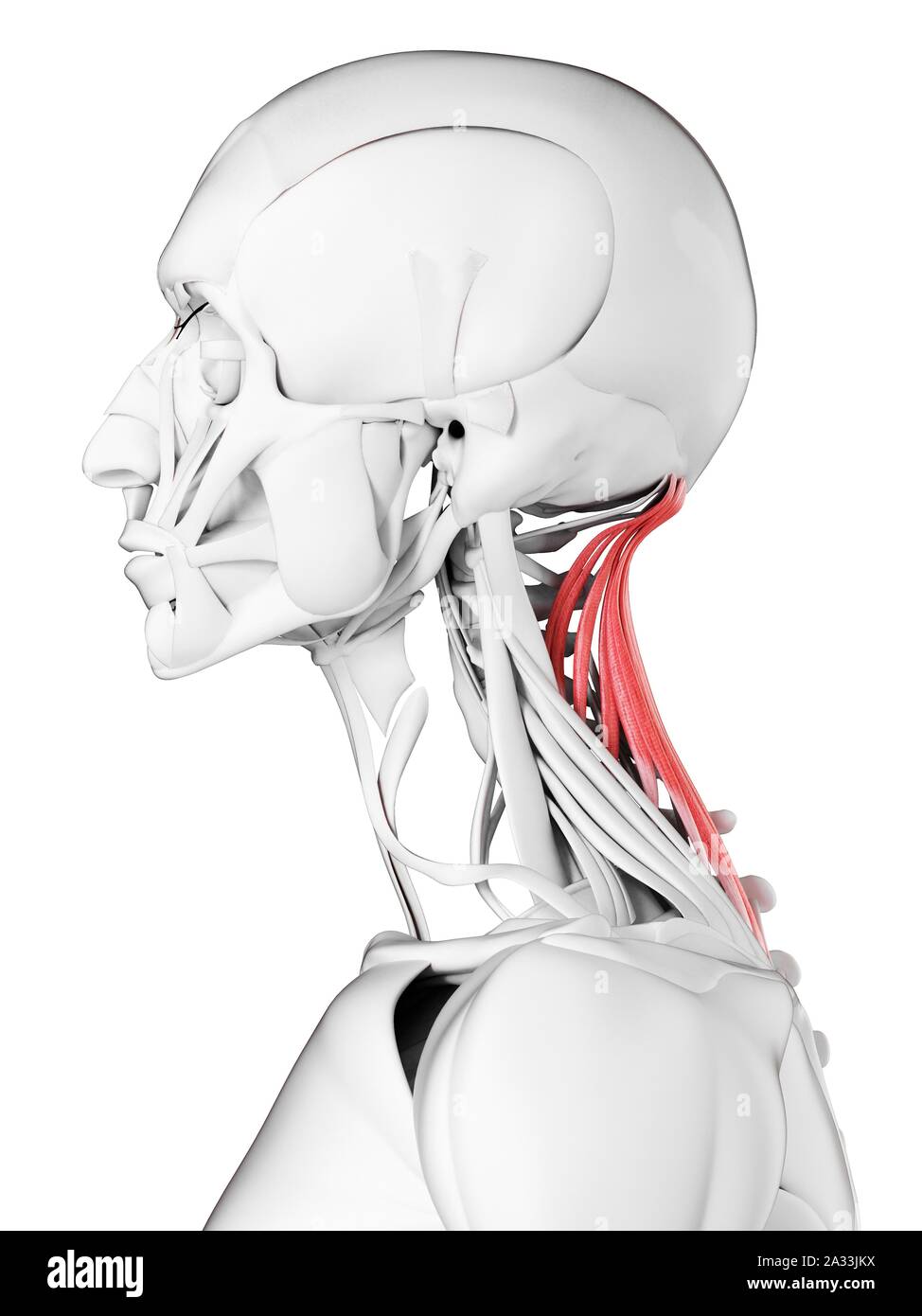
Semispinalis capitis muscle, illustration Stock Photo Alamy
Revisions: 3 The semispinalis is a deep muscle of the back . It can be divided by its superior attachments into thoracic, cervicis, and capitis. Attachments: Originates from the transverse processes of C4 - T10. The fibres ascend 4 - 6 vertebral segments, attaching to the spinous processes of C2 - T4 and to the occipital bone of the skull.

Semispinalis Capitis Physiopedia
The semispinalis capitis muscle connects the scalp and spine to control some head movements. With this muscle connecting to the scalp, the symptoms vary more than typical neck pain. Symptoms of semispinalis capitis pain include: Tenderness in the back of the head and neck Upper neck and head pain Scalp numbness

Semispinalis capitis muscle, illustration Stock Image F025/7268
The back refers to the region on the posterior surface of the trunk which extends from the inferior border of the neck to the gluteal region. The layers of the back comprise the skin, subcutaneous tissue, superficial (extrinsic) and deep (intrinsic) back muscles, the posterior portion of the ribs, and the vertebral column housing the spinal cord and surrounding meninges.

Semispinalis Capitis Muscle Anatomy For Medical Concept 3D Illustration
Musculus semispinalis capitis Related terms: Semispinalis capitis Definition Origin: Transverse processes of T6-C3 Insertion: Area between superior and inferior nuchal line Nerve: Greater occipital nerve and posterior rami of spinal nerves of C1-C5 Action: Extend the head Description:
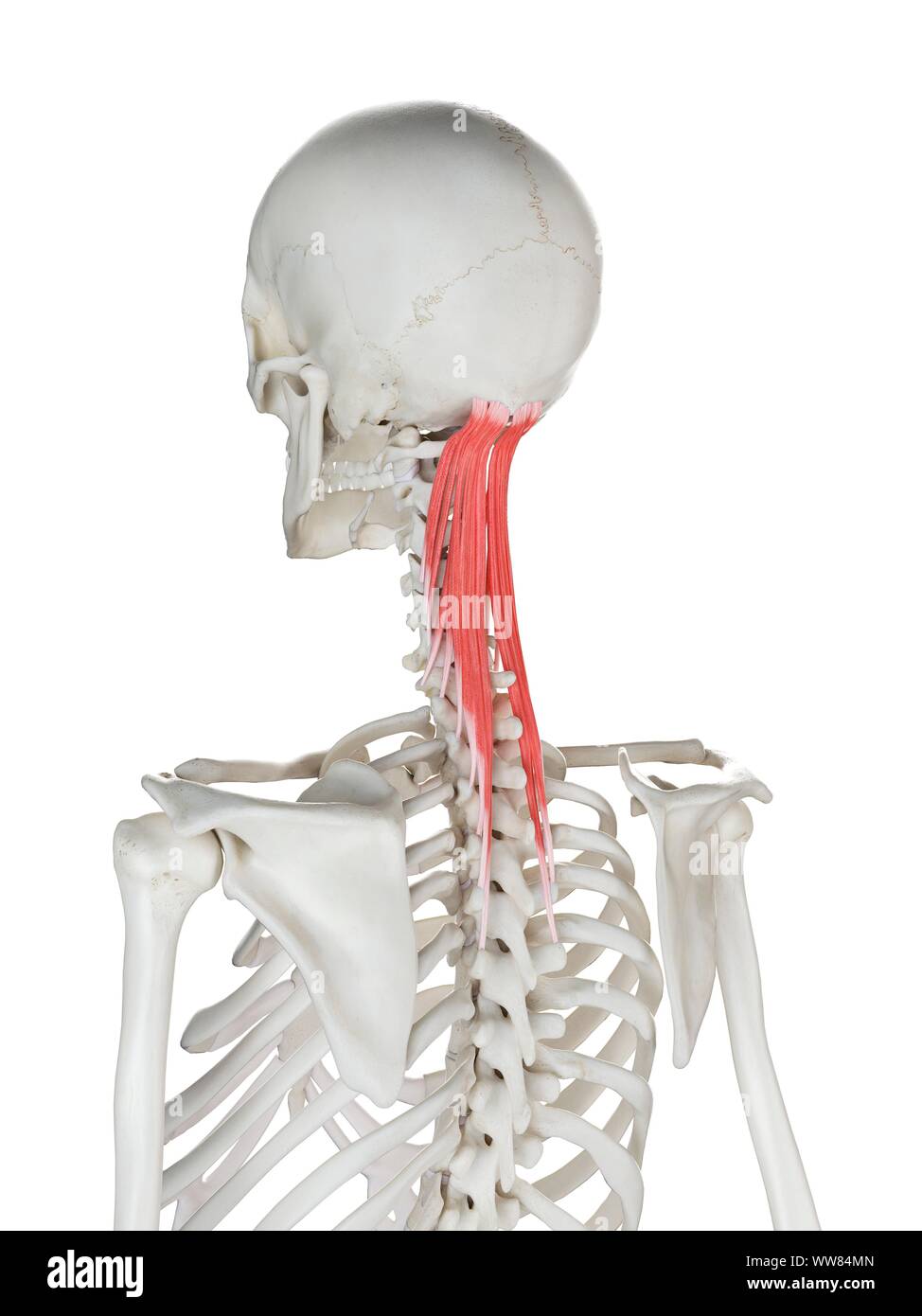
Semispinalis capitis muscle, illustration Stock Photo Alamy
The semispinalis capitis is a long slender muscle that provided a long moment arm to provide an efficient extension of the neck. Origin: The Semispinalis capitis muscle originates from the articular processes of the C 5, C6, C7, and C8 as well as the transverse processes of T 1, T2, T3, T4, T5, and T6. Insertion:

Splenius Muscles, Their Attachments and Actions Yoganatomy
Spinalis is the most medial of the three erector spinae muscles. Like the other two, it is made up of three parts. Spinalis and longissimus both have capitis, cervicis and thoracis parts, while iliocostalis has cervicis, thoracis and lumborum parts. This article will discuss the anatomy and function of the spinalis muscle.
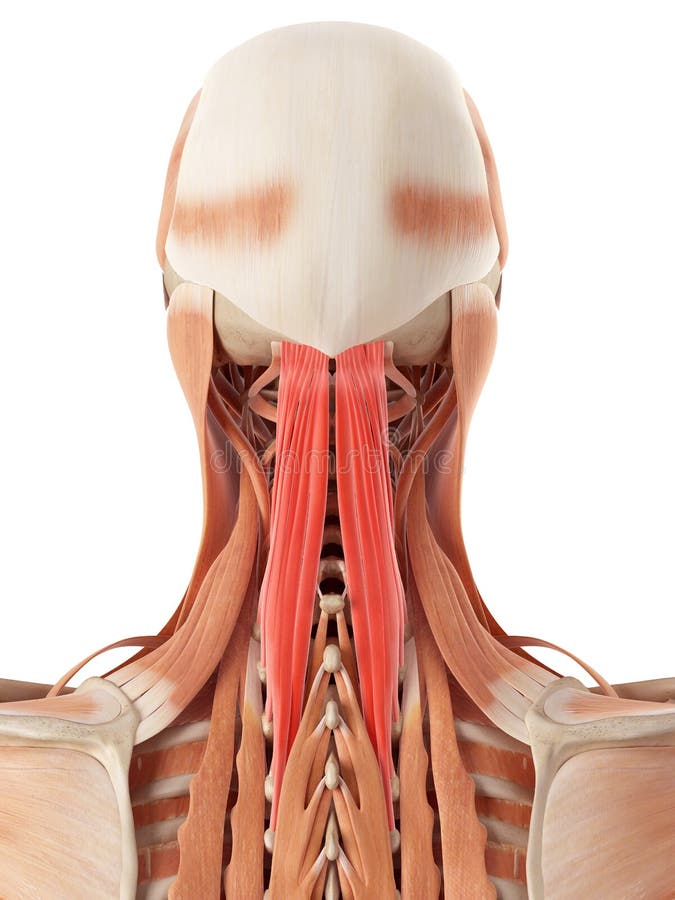
The semispinalis capitis stock illustration. Illustration of male
General information The Semispinalis capitis is found at the upper back portion of the neck, medial to the longissimus, capitis and cervicis and deep to the splenius. This muscle is part of the transversospinales muscle group.